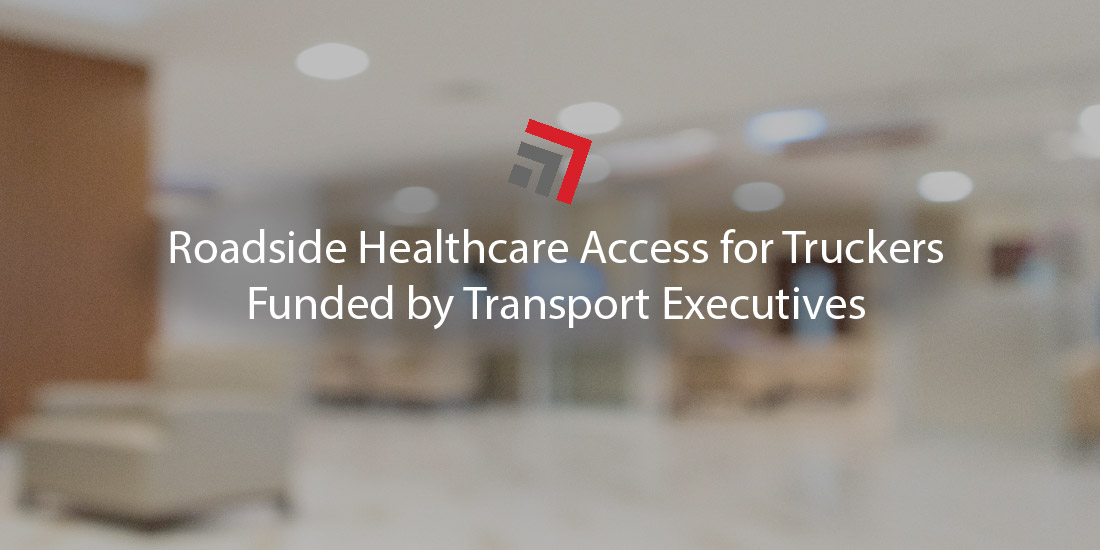The U.S. ranks both third in the world for its population and land size. While it’s a well-developed country with adequate infrastructure in place, there are still significant issues that exist for many Americans.
Among these issues is immediate healthcare access. The U.S. is big and, in terms of land, the vast majority of it is rural. Across America’s many prairies, mountain passes, forests and deserts are small communities—faraway from the bustling cities which have these available resources.
It’s estimated that 46 million people currently live in medically underserved areas. In addition, transients, like America’s 3.5 million professional truck drivers, are also operating through these areas and are faced with the same healthcare barriers.
Healthcare access for truckers backed by transport executive investors
Enter Interstate Health Systems (IHS).
Last month, this medical services company announced its launch to establish a dynamic network of primary care, urgent care, and telemedicine services along the nation’s interstate highway system.
The ambitious project has a simple purpose—to service the healthcare needs of rural Americans and interstate travelers (truckers).
Within six years, the company plans to build more than 300 urgent care clinics near strategically selected truck stops and travel centers. In theory, across these hundreds of locations, truckers, the traveling public, and underserved communities will have closer access to healthcare service.
The November announcement of the project’s kickoff came as IHS closed its pre-seed funding stage. Several private investors, many of whom are transport and tech industry executives, backed this first round of capital raise.
If you look at the list of investors, it appears to be the prompt of a logistics joke.
An LTL carrier, an insurance company, and a freight visibility provider walk into a bar…
Jokes aside, the spread of executives from different sectors in logistics pooling funds in for a common and noble cause is delightful to see. It’s also suggested each investor is playing an active role, to some degree, in getting the business off the ground, FreightWaves reports.
One of the investors, Rob Estes, CEO of Estes Express Lines, believes this project is a major leap forward to solve healthcare challenges truck drivers face every day.
While the project has its bases covered with logistics stakeholders, IHS’s CEO Jeff Seraphine hopes to onboard healthcare companies as investors too. Seraphine himself has a health industry background with more than 25 years of overseeing several rural hospital systems.
Low cost primary and urgent care services
The facilities that are planned to be built will provide primary and urgent care services. In theory, truck drivers, or anyone else in need of care, will use an app on their phones to communicate with each facility and book appointments.
IHS reports that a platform offering telemedicine services and a network of pharmacies will be built out as well. Nurse practitioners are expected to make up the staff and these locations will have more capabilities than that of typical storefront medical clinics.
A few exceptions exist, however. These clinics will not provide surgical services or treat patients whose conditions warrant treatment more suitable for a hospital’s emergency room.
IHS plans to obtain status with health insurance companies making it easier for truck drivers, whether if they are employed with a carrier or owner-operator. Seraphine emphasizes IHS’s desire to provide low costs so drivers are not faced with the dilemma to delay care.
Fool me twice?
FreightWaves chronicles a failed attempt of a past project with similar intentions. The company, Truckers Health Team, went bankrupt and was forced to close its 14 locations back in June 2021.
At first glance, some may think—fool me once, shame on you. Fool me twice…
But, the IHS is well-aware of that saga. The company reviewed what exactly went wrong with the Truckers Health Team’s model.
Seraphine notes it lacked sufficient scale and resources compared to what the IHS envisions. Secondly, the locations were hard to find and often situated towards the backs of truck parks.
And lastly, most of the investors were strictly financers with no transport or tech industry experience. It’s quite the opposite with IHS’s core investors.
Final Thoughts
While 300 locations built is the goal over the next six years, IHS plans to open 40 to 60 locations over the next two years.
Contact one of our team members if you have any questions regarding this topic or any others in domestic logistics.
This is an everchanging industry. Stay current on rail and trucking developments with our weekly Road Map Newsletter.



Recent Comments